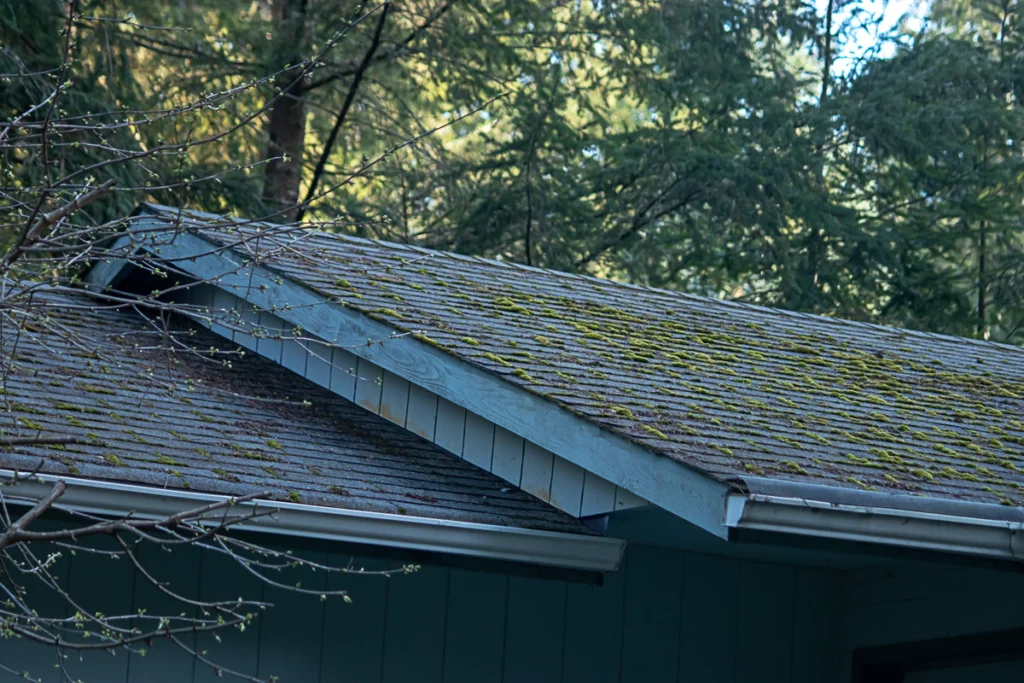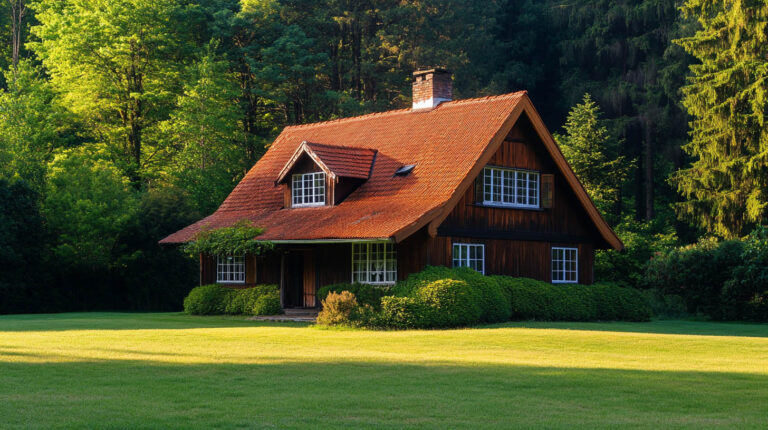
Blog
Roof Moss Removal: Remove Moss In 3 Steps
Your roof is the guardian of your home, shielding it from the elements year-round. However, even the most resilient roofs can fall victim to an insidious invader: moss.
While it may seem harmless at first, moss can wreak havoc on your roof if left unchecked. Want to learn how to remove it? We’re explain everything you need to know about roof moss removal, from:
- Identifying the signs
- Preventing future growth
- Understanding when it’s time for repairs or replacement
Signs of Roof Moss Infestation
Moss may be small, but its impact can be significant. Here are some telltale signs that moss has taken root on your roof:
- Green patches or streaks: Moss typically appears as green patches or streaks on your roof’s surface, especially in shaded or damp areas.
- Raised shingles: As moss grows beneath your shingles, it can lift them, creating gaps where water can penetrate.
- Water stains on interior walls or ceilings: Moss can trap moisture, leading to leaks and water damage inside your home.
- Reduced lifespan of your roof: If left untreated, moss can accelerate the deterioration of your roof, leading to premature aging and costly repairs.
Causes of Moss Growth on Your Roof
Understanding why moss thrives on roofs can help you prevent its recurrence. Several factors contribute to moss growth, including:
- Shaded areas: Moss thrives in shaded, damp environments, making north-facing or heavily shaded roofs particularly susceptible.
- Moisture retention: Debris such as leaves, twigs, and dirt can accumulate on your roof, providing a fertile breeding ground for moss.
- Poor roof ventilation: Inadequate ventilation traps moisture in your attic, creating ideal conditions for moss to flourish.
- Environmental factors: Climate plays a significant role in moss growth, with damp, humid regions experiencing higher prevalence.
How to Remove Moss from Your Roof in 3 Steps

While moss removal may seem daunting, several methods can effectively eradicate it from your roof:
1) Manual Removal:
Use a stiff brush or scraper to gently dislodge moss from your roof’s surface, taking care not to damage the shingles.
2) Chemical Treatments:
Commercial moss-killing solutions or homemade remedies like vinegar or bleach can be applied to kill moss and inhibit regrowth.
3) Pressure Washing:
A high-pressure washer can blast away moss and debris, restoring your roof’s appearance. However, caution must be exercised to avoid damaging the shingles or forcing water beneath them.
Preventing Moss Growth on Your Roof
Prevention is key to maintaining a moss-free roof over the long term. Here are some proactive measures you can take:
- Trim overhanging branches: Prune trees near your roof to reduce shade and minimize debris accumulation.
- Clean gutters and downspouts: Regularly remove leaves and debris from your gutters to prevent water from pooling on your roof.
- Install zinc or copper strips: Metal strips placed along the roof ridge release ions that inhibit moss growth over time.
- Improve roof ventilation: Ensure adequate airflow in your attic to reduce moisture buildup and discourage moss growth.
Importance of Scheduling a Roof Inspection
Regular roof inspections are essential for detecting moss growth and addressing underlying issues before they escalate. Here’s why you should schedule a professional inspection:
Early Detection
A trained roofer can identify moss growth, water damage, or structural issues that may compromise your roof’s integrity.
Preventative Maintenance
Timely repairs and maintenance can extend the lifespan of your roof and save you money on costly repairs down the line.
Peace of Mind
Knowing that your roof is in good condition provides peace of mind and protects your home and investment.
Cost to Repair Your Roof
The cost of repairing a moss-infested roof depends on various factors, including the extent of the damage and the materials involved. Common repair costs may include:
- Moss Removal: Manual removal or chemical treatments typically range from $200 to $600, depending on the size and complexity of the job.
- Shingle Replacement: Damaged or lifted shingles may need to be replaced, costing anywhere from $100 to $500 per square.
- Structural Repairs: If moss growth has caused structural damage, such as rot or decay, repair costs can escalate significantly, ranging from $500 to $10,000 or more.
Signs That You Need a Roof Replacement
In some cases, moss infestation may be a symptom of underlying issues that necessitate a roof replacement. Here are some signs that it’s time for a new roof:
Extensive Moss Growth:
If moss covers a large portion of your roof and has caused widespread damage, replacement may be the most cost-effective solution.
Multiple Leaks or Water Damage:
Chronic leaks or water stains inside your home indicate roof failure and may require a complete overhaul.
Aging Roof:
If your roof is nearing the end of its lifespan (typically 20-30 years for asphalt shingles), replacement may be necessary to ensure continued protection.
Let Us Handle Your Moss Covered Roof

Roof moss removal is a crucial aspect of maintaining a healthy and functional roof. By identifying the signs of moss infestation, understanding its causes, and implementing preventive measures, you can prolong the life of your roof and safeguard your home against water damage and costly repairs.Remember to schedule regular roof inspections and address any issues promptly to keep your roof in optimal condition for years to come. Contact Avenue Roofing for a professional roof cleaning service today!



